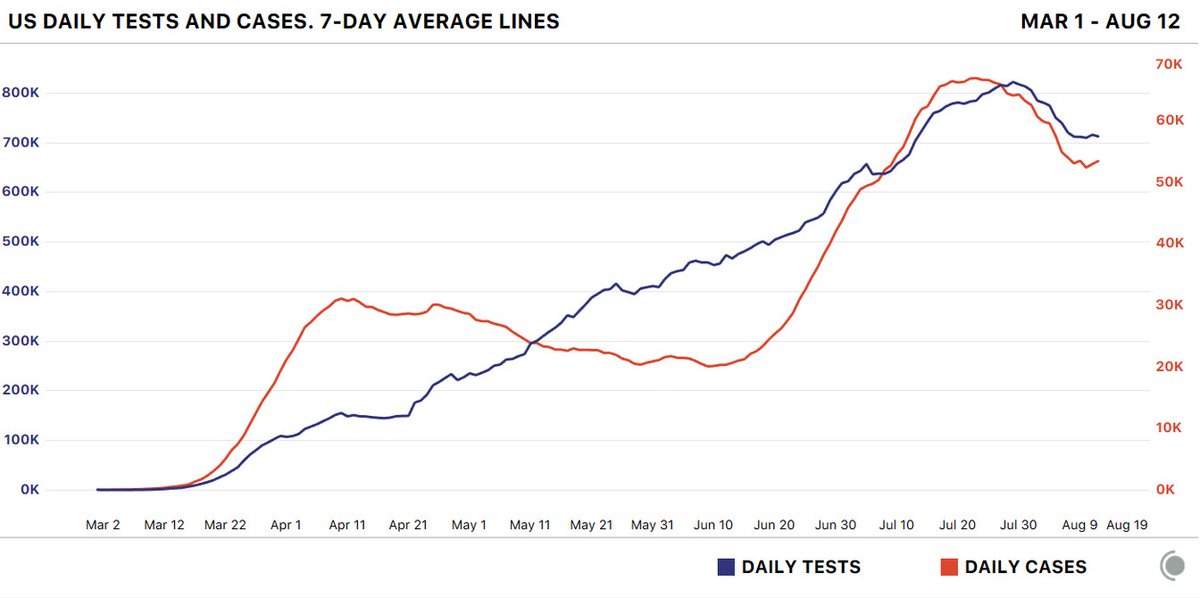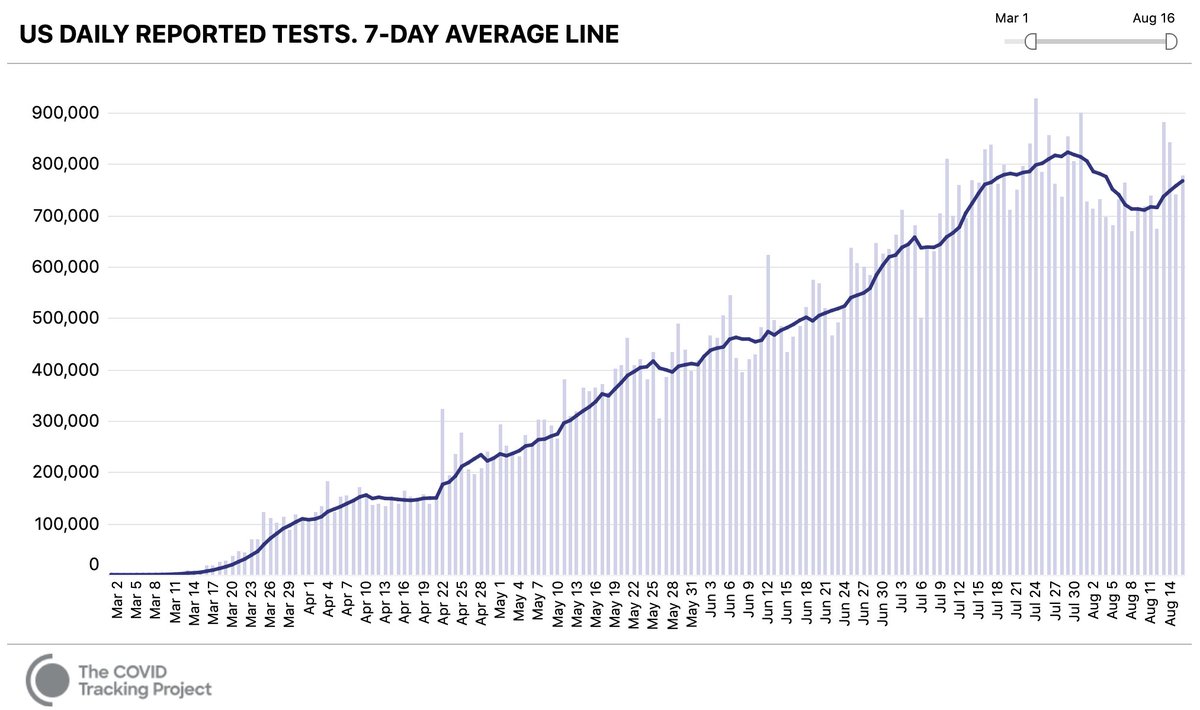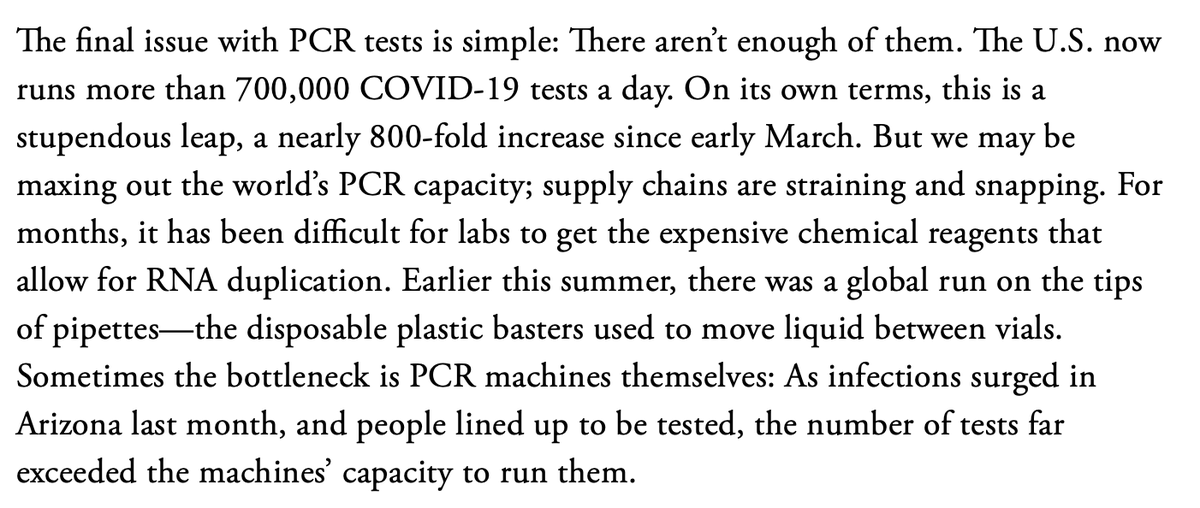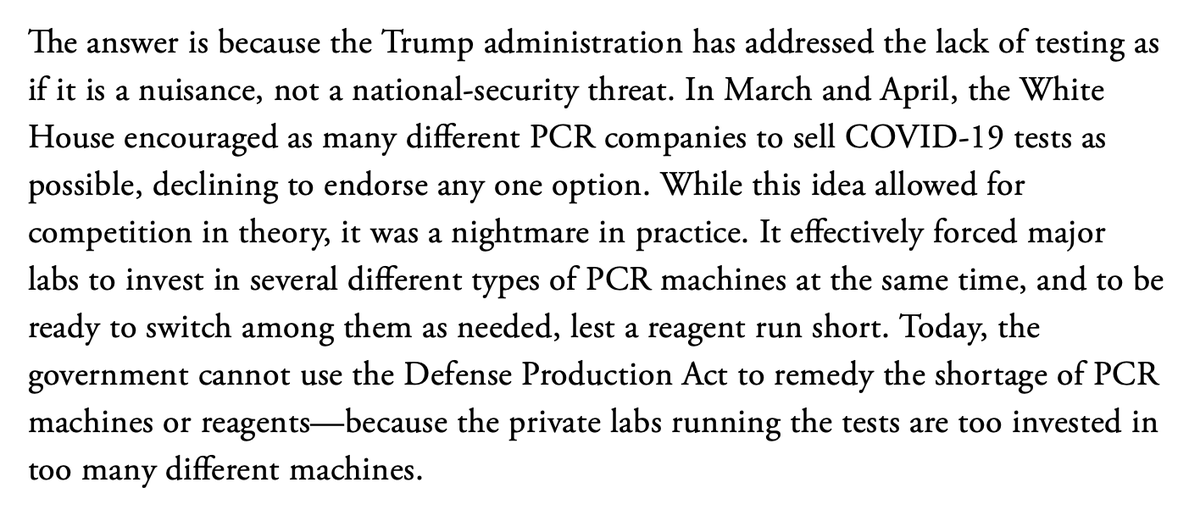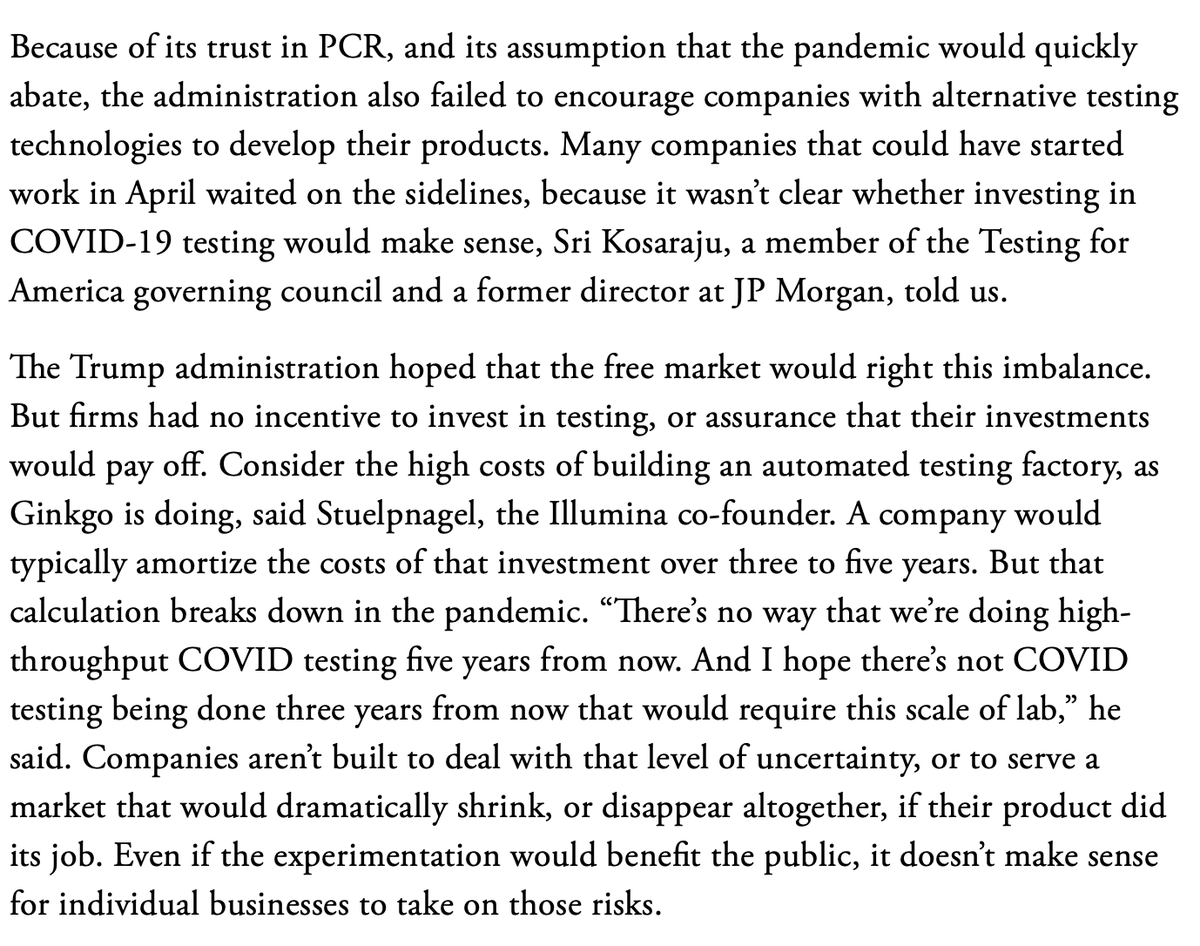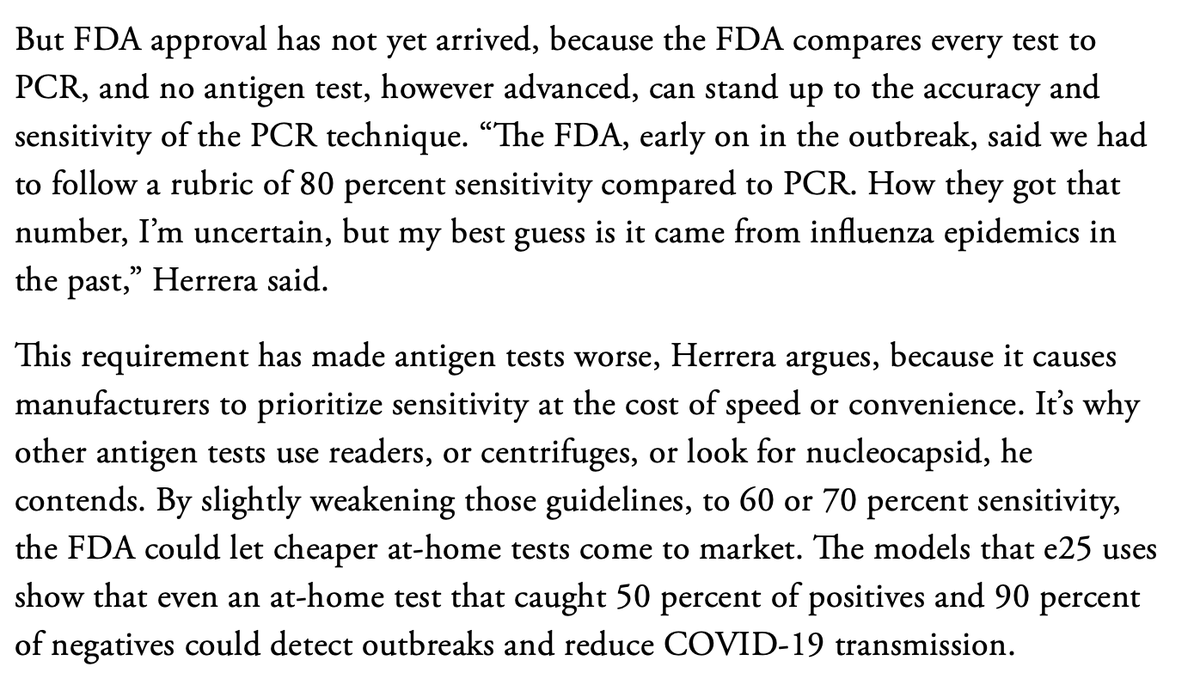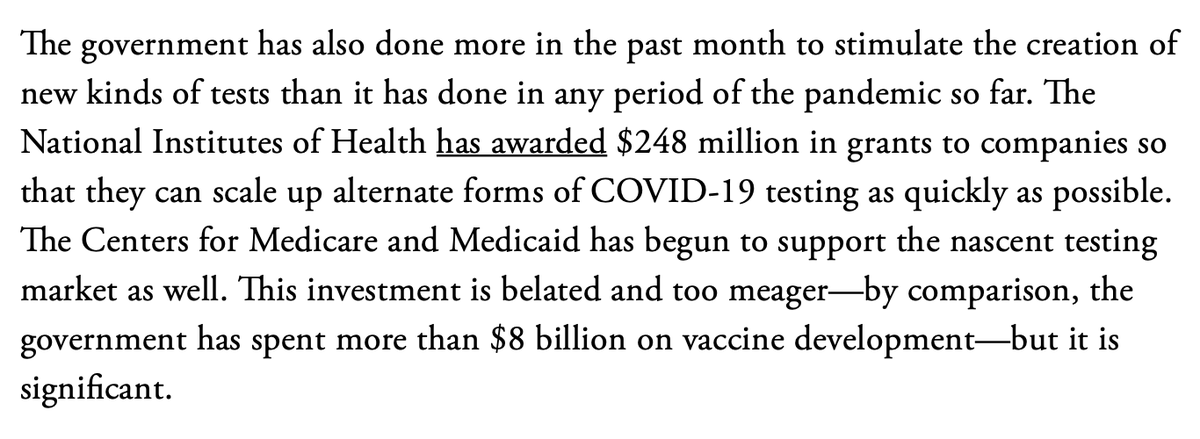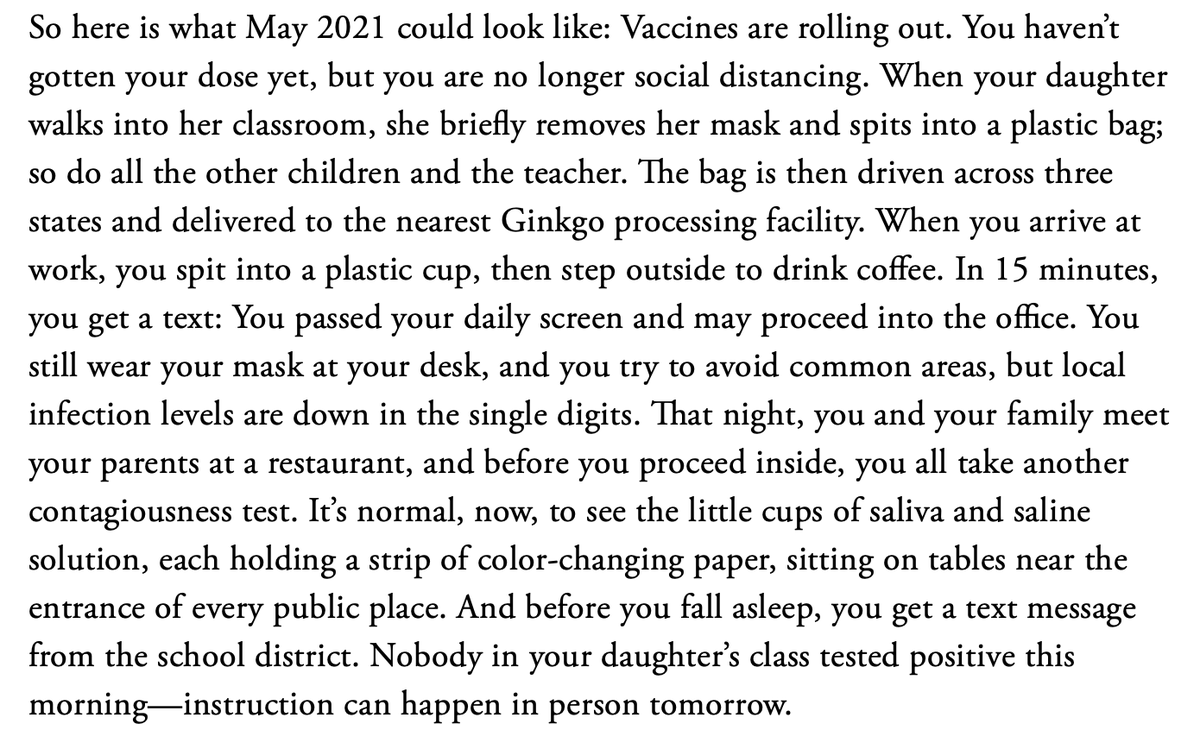I’ve been covering COVID-19 testing with @alexismadrigal for the last six months. We’ve kept coming back to the same questions: Why is testing still broken in America? Can it be fixed? Should we even try to fix it now?
This is our attempt at an answer: https://www.theatlantic.com/health/archive/2020/08/how-to-test-every-american-for-covid-19-every-day/615217/
This is our attempt at an answer: https://www.theatlantic.com/health/archive/2020/08/how-to-test-every-american-for-covid-19-every-day/615217/
It’s worth focusing on one of these questions: Why is testing *still* broken?
Because it’s definitely still broken. The start of August saw the first concerted decline in tests since the pandemic began. About 7% of US tests are coming back positive, according to the CDC. 2/n
Because it’s definitely still broken. The start of August saw the first concerted decline in tests since the pandemic began. About 7% of US tests are coming back positive, according to the CDC. 2/n
The standard explanation of why testing failed is that a fight between the FDA and CDC held back the debut of tests in February, allowing the virus to spread silently and beyond our ability to contain it. @olgakhazan had a good story on this then:
https://www.theatlantic.com/health/archive/2020/03/why-coronavirus-testing-us-so-delayed/607954/ (3/n)
https://www.theatlantic.com/health/archive/2020/03/why-coronavirus-testing-us-so-delayed/607954/ (3/n)
But a failure in February doesn’t fully explain why testing is broken in August. Because testing has, in truth, seemingly recovered from its initial slow start: The US now runs at least 700k PCR tests a day, reflecting a nearly 800-fold surge in capacity since early March. (4/n)
The problem now isn’t that the US was too late to make PCR tests in February. It’s that we’ve strained the world’s capacity to run PCR tests at all. Supply chains are snapping. There have been global runs on chemical reagents, even pipette tips. (5/n) https://theatlantic.com/health/archive/2020/08/how-to-test-every-american-for-covid-19-every-day/615217/
When testing fails, it saps the whole medical system of capacity. In July, the number of samples in Arizona far exceeded local PCR machines’ ability to run them. This meant that even tests for doctors, which are fast-tracked, took days to come back. (6/n) https://theatlantic.com/health/archive/2020/08/how-to-test-every-american-for-covid-19-every-day/615217/
How does a situation like *that* happen? How did we run the global PCR supply chain into the ground? It was foreseeable and foreseen—I wrote about it in May. The White House never adopted a US testing strategy. It has three big failures. (7/n) https://www.theatlantic.com/science/archive/2020/05/theres-only-one-way-out-of-this-mess/611431/
Its first failure: In March and April, the White House encouraged as many manufacturers of PCR tests as possible to make COVID tests. The idea was laudable—the admin wanted to put the free market to work. But it had a dark side for labs and health-care providers. (8/n)
Each PCR test manufacturer makes its own test “platform”—a combination of expensive equipment and proprietary chemical reagents that are all needed to run a test. Each company’s platform, as you might imagine, has its own supply chain. (9/n)
In the face of overwhelming demand, each of those supply chains became faulty and unreliable. So if a commercial lab wanted to be certain it could deliver test results for a lot of people, it needed to buy materials for as many different PCR platforms as possible. (10/n)
Today, those labs are invested in many different platforms… and their supply chains *remain* unreliable. But because the White House didn’t set a common standard in April, it can’t easily use the Defense Production Act to remedy shortages now. (11/n)
https://www.theatlantic.com/health/archive/2020/08/how-to-test-every-american-for-covid-19-every-day/615217/
https://www.theatlantic.com/health/archive/2020/08/how-to-test-every-american-for-covid-19-every-day/615217/
Its second failure: The White House did not spur investment in new and advanced forms of testing in April. Even as it began pouring billions into experimental vaccine development in the spring, it made no such effort to spur new forms of testing. (12/n) https://www.theatlantic.com/health/archive/2020/08/how-to-test-every-american-for-covid-19-every-day/615217/
The administration, again, trusted in the free market to work. But for individual companies, the calculus was: Why invest in COVID-19 testing at all? It’s high risk, low reward, and demand for even the best product is certain to dry up by 2023. (13/n)
So through the spring, a lot of companies—and a lot of capital—didn’t invest in testing at all. Instead they sat on the sidelines, executives and academics told me. Even if experimentation would’ve helped the public, it was too risky for investors. (14/n) https://www.theatlantic.com/health/archive/2020/08/how-to-test-every-american-for-covid-19-every-day/615217/
The FDA also discouraged investment here. Because it compares all new tests to gold-standard PCR tests, it’s hard for firms to bring new (and less accurate) experimental tests to market, even if they’re meant to answer different questions than PCR: (15/n) https://www.theatlantic.com/health/archive/2020/08/how-to-test-every-american-for-covid-19-every-day/615217/
The third failure: The government has not used its national procurement authority to buy tests or shape the testing market. This has led states, cities, commercial labs & others to compete with each other and bid up the price of tests and other materials. (16/n)
One historian told me that lately he’s been thinking about the early days of the Civil War in the North, when governors competed to buy ammo, guns, and uniforms for their regiments, wrecking the market and bidding up the price of materiel nationwide. (17/n)
These problems are starting to be resolved. The NIH recently granted $249 million to seven companies so that they could scale up their new forms of testing as soon as possible, with as little risk as possible. This addresses Failure #2. (18/n)
The Centers for Medicare and Medicaid also recently said it’s going to buy a form of antigen test for every nursing home in the country. This addresses Failure #3 and *also* Failure #2—by assuring demand, it further de-risks scale-up costs. (19/n) https://www.theatlantic.com/health/archive/2020/08/how-to-test-every-american-for-covid-19-every-day/615217/
But to fix the problem, the WH must remedy Failure #1. It must spend public dollars and use public authority to mass produce COVID-19 tests. It’s inexcusable that it hasn’t yet. It’s inexcusable that, six months into a pandemic, the US still doesn’t have enough tests. (20/n)
If the government treated tests like it does vaccines, then we might be able to get back to something like normal life soon. We could reopen schools, offices, restaurants, and more.
Your day might look a little like this:
https://www.theatlantic.com/health/archive/2020/08/how-to-test-every-american-for-covid-19-every-day/615217/ (21/n)
Your day might look a little like this:
https://www.theatlantic.com/health/archive/2020/08/how-to-test-every-american-for-covid-19-every-day/615217/ (21/n)
But to find out how we might pull that off…
and learn how we could make things better, even without further federal action…
…you’ll have to read the full story: https://theatlantic.com/health/archive/2020/08/how-to-test-every-american-for-covid-19-every-day/615217/ (22/22)
and learn how we could make things better, even without further federal action…
…you’ll have to read the full story: https://theatlantic.com/health/archive/2020/08/how-to-test-every-american-for-covid-19-every-day/615217/ (22/22)

 Read on Twitter
Read on Twitter